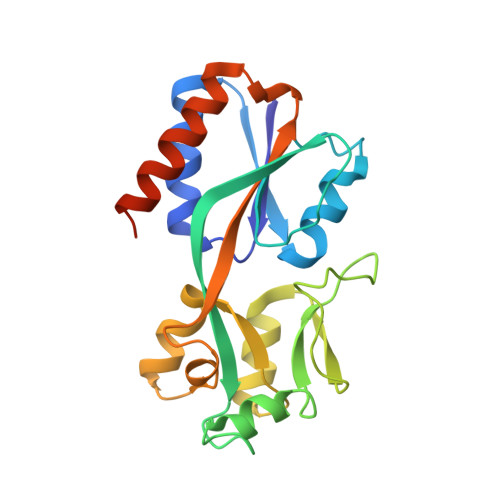Design, Synthesis, and Evaluation of New 1 H -Benzo[ d ]imidazole Based PqsR Inhibitors as Adjuvant Therapy for Pseudomonas aeruginosa Infections.
Soukarieh, F., Mashabi, A., Richardson, W., Oton, E.V., Romero, M., Dubern, J.F., Robertson, S.N., Lucanto, S., Markham-Lee, Z., Sou, T., Kukavica-Ibrulj, I., Levesque, R.C., Bergstrom, C.A.S., Halliday, N., Kellam, B., Emsley, J., Heeb, S., Williams, P., Stocks, M.J., Camara, M.(2024) J Med Chem 67: 1008-1023
- PubMed: 38170170
- DOI: https://doi.org/10.1021/acs.jmedchem.3c00973
- Primary Citation of Related Structures:
8Q5K, 8Q5L - PubMed Abstract:
Pseudomonas aeruginosa is one of the top priority pathogens that requires immediate attention according to the World Health Organisation (WHO). Due to the alarming shortage of novel antimicrobials, targeting quorum sensing (QS), a bacterial cell to cell signaling system controlling virulence, has emerged as a promising approach as an antibiotic adjuvant therapy. Interference with the pqs system, one of three QS systems in P. aeruginosa , results in reduction of bacterial virulence gene expression and biofilm maturation. Herein, we report a hit to lead process to fine-tune the potency of our previously reported inhibitor 1 (IC 50 3.2 μM in P. aeruginosa PAO1-L), which led to the discovery of 2-(4-(3-((6-chloro-1-isopropyl-1 H -benzo[ d ]imidazol-2-yl)amino)-2-hydroxypropoxy)phenyl)acetonitrile ( 6f ) as a potent PqsR antagonist. Compound 6f inhibited the PqsR-controlled P pqsA - lux transcriptional reporter fusion in P. aeruginosa at low submicromolar concentrations. Moreover, 6f showed improved efficacy against P. aeruginosa CF isolates with significant inhibition of pyocyanin, 2-alkyl-4(1 H )-quinolones production.
Organizational Affiliation:
School of Life Sciences, University of Nottingham Biodiscovery Institute, University of Nottingham, Nottingham NG7 2RD, U.K.















